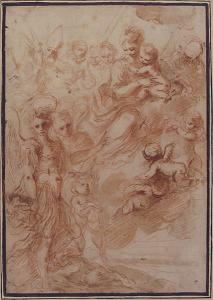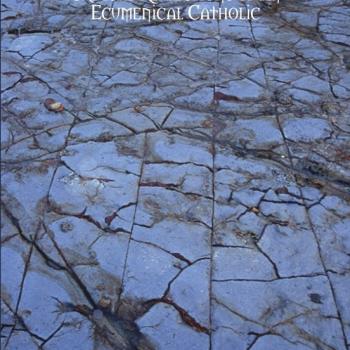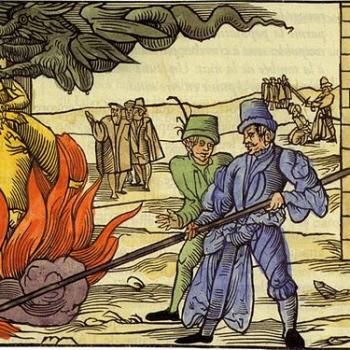14. Jesus’ Visit (After He Died) to Hades, Preaching to the “Spirits in Prison” and Setting “Captives” Free
Lucas Banzoli is a very active Brazilian anti-Catholic polemicist, who holds to basically a Seventh-Day Adventist theology, whereby there is no such thing as a soul that consciously exists outside of a body, and no hell (soul sleep and annihilationism). This leads him to a Christology which is deficient and heterodox in terms of Christ’s human nature after His death. He has a Master’s degree in theology, a degree and postgraduate work in history, a license in letters, and is a history teacher, author of 25 books, as well as blogmaster (but now inactive) for six blogs. He’s active on YouTube.
This is my 50th refutation of Banzoli’s writings. From 5-25-22 until 11-12-22 (almost half a year) he didn’t write even one single word in reply. Since then he has counter-responded three times. Why so few and so late? Well, he says it’s because my articles are “without exception poor, superficial and weak . . . only a severely cognitively impaired person would be inclined to take” them “seriously.” He didn’t “waste time reading” 37 of my first 40 replies (three articles being his proof of the worthlessness of all of my 4,000+ articles and 51 books). He also denied that I had a “job” and claimed that I didn’t “work.” But he concluded that replying to me is so “entertaining” that he resolved to “make a point of rebutting” my articles “one by one.” I disposed of his relentlessly false personal insults in Facebook posts dated 11-13-22 and 11-15-22 and 11-23-22.
My current effort is a major multi-part response to Banzoli’s 1900-page self-published book, The Legend of the Immortality of the Soul [A Lenda da Imortalidade da Alma], published on 1 August 2022. He claims to have “cover[ed] in depth all the immortalist arguments” and to have “present[ed] all the biblical proofs of the death of the soul . . .” and he confidently asserted: “the immortality of the soul is at the root of almost all destructive deception and false religion.” He himself admits on page 18 of his Introduction that what he is opposing is held by “nearly all the Christians in the world.” A sincere unbiblical error (and I assume his sincerity) is no less dangerous than a deliberate lie, and we apologists will be “judged with greater strictness” for any false teachings that we spread (Jas 3:1).
I use RSV for the Bible passages (including ones that Banzoli cites) unless otherwise indicated. Google Translate is utilized to render Lucas’ Portugese into English. Occasionally I slightly modify clearly inadequate translations, so that his words will read more smoothly and meaningfully in English. His words will be in blue.
*****
See the other installments:
See also the related articles:
Seven Replies Re Interceding Saints (vs. Lucas Banzoli) [5-25-22]
Answer to Banzoli’s “Challenge” Re Intercession of Saints [9-20-22]
Bible on Praying Straight to God (vs. Lucas Banzoli) [9-21-22]
Reply to Banzoli’s “Analyzing the ‘evidence’ of saints’ intercession” [9-22-22]
*****
Ephesians 4:8-10 Therefore it is said, “When he ascended on high he led a host of captives, and he gave gifts to men.” [9] (In saying, “He ascended,” what does it mean but that he had also descended into the lower parts of the earth? [10] He who descended is he who also ascended far above all the heavens, that he might fill all things.)
1 Peter 3:18-20 For Christ also died for sins once for all, the righteous for the unrighteous, that he might bring us to God, being put to death in the flesh but made alive in the spirit; [19] in which he went and preached to the spirits in prison, [20] who formerly did not obey,
The argument is that, between his death and resurrection, Jesus’ soul left his body and went to hell to preach to other human souls outside the body, who agonized among the flames. (p. 387)
What is being referred to in these passages is Hades, or Sheol, not hell. The word “hell” in the past had a wider meaning, encompassing Sheol/Hades as well. Jesus couldn’t have “ascended on high” with “captives” from the actual hell of everlasting punishment, because that sentence of damnation is irrevocable. Anyone who is in hell can never escape it. Therefore, this place of the afterlife must have been in Hades, since souls could leave it.
There are many problems with this interpretation. First, despite popular belief, nowhere in the text does it tell us that Jesus did this in between his death and resurrection. On the contrary, the context indicates that this occurred only after the resurrection’ by describing a sequence of events, where preaching follows death and resurrection. He was (1) killed in the body, (2) quickened in the Spirit, and (3) preached to the spirits in prison. First he died, then he was made alive (a term that alludes to the resurrection – cf. 1 Co 15:22), and only afterwards preached to the spirits in prison. Therefore, preaching does not occurred before the resurrection, but after it. (pp. 387-388)
“Made alive in the spirit” is what it states: in the “spirit”: which is not yet resurrection. Then the next verse states: “in which he went . . ” This refers to being “in the spirit” from the previous verse. In other words, He preached as a spirit in Hades. A. T. Robertson, in his Word Pictures in the New Testament, comments on 1 Peter 3:18 as follows:
But quickened in the spirit ( ζωοποιηθεις δε πνευματ ). First aorist passive participle of ζωοποιεω rare (Aristotle) verb (from ζωοποιος making alive), to make alive. The participles are not antecedent to απεθανεν, but simultaneous with it. There is no such construction as the participle of subsequent action. The spirit of Christ did not die when his flesh did, but “was endued with new and greater powers of life” (Thayer).
Likewise, Marvin Vincent, in his Word Studies in the New Testament commented on the passage:
. . . without the article, in spirit; . . . referring to his spiritual, incorporeal life. The words connect themselves with the death-cry on the cross: “Father, into thy hands I commend my spirit.” . . .
19. . . . Went and preached (poreuqeiv ekhruxen). The word went, employed as usual of a personal act; and preached, in its ordinary New-Testament sense of proclaiming the Gospel.
To the spirits (pneumasin). As in Heb. xii. 23, of disembodied spirits, though the word yucai, souls, is used elsewhere (Apoc. vi. 9; xx. 4).
The meaning is quite clear: Jesus was a disembodied, immaterial spirit (not yet resurrected) at the time He preached to other disembodied, immaterial spirits. This proves that it was from the time in-between His death (since He is not in His body) — “put to death in the flesh” — and His resurrection, when He will again be in His body, but a glorified one. Commentaries elaborate upon this straightforward interpretation:
Ellicott’s Commentary for English Readers:
[W]e cannot translate it “quickened by the Spirit.” It is literally, killed indeed in flesh, but quickened in spirit. Now, how can “quickened in spirit” be a description of the Resurrection? It cannot be answered . . . that the “spirit” here means the resurrection body; for though that is indeed a spiritual body, yet it is playing fast and loose with words to identify “spirit” and “spiritual body.” If the resurrection body be only spirit, where is the resurrection? Neither would the antithesis be correct between “flesh” and “spirit,” if by “spirit” is meant the new form of body given at the Resurrection. Or, again, taking “spirit” in its true sense of the inward incorporeal self, could the Resurrection be described as a quickening of it? True, the spirit itself will gain in some way by its re-incorporation (2Corinthians 5:4); but as the spirit has been alive all along, but the flesh has been dead, the contrast would be very forced to express death and resurrection by “killed in flesh, but quickened in spirit,” instead of saying rather “killed in flesh, but soon quickened in the same.”
Jamieson-Fausset-Brown Bible Commentary:
quickened by the Spirit—The oldest manuscripts omit the Greek article. Translate with the preposition “in,” as the antithesis to the previous “in the flesh” requires, “IN spirit,” that is, in respect to His Spirit. “Put to death” in the former mode of life; “quickened” in the other. Not that His Spirit ever died and was quickened, or made alive again, but whereas He had lived after the manner of mortal men in the flesh, He began to live a spiritual “resurrection” (1Pe 3:21) life, whereby He has the power to bring us to God. Two ways of explaining 1Pe 3:18, 19, are open to us: (1) “Quickened in Spirit,” that is, immediately on His release from the “flesh,” the energy of His undying spirit-life was “quickened” by God the Father, into new modes of action, namely, “in the Spirit He went down (as subsequently He went up to heaven, 1Pe 3:22, the same Greek verb) and heralded [not salvation, as Alford, contrary to Scripture, which everywhere represents man’s state, whether saved or lost, after death irreversible. Nor is any mention made of the conversion of the spirits in prison. See on 1Pe 3:20. Nor is the phrase here ‘preached the Gospel’ (evangelizo), but ‘heralded’ (ekeruxe) or ‘preached’; but simply made the announcement of His finished work;
Christ having life in Himself [Jn 1:4; 5:26], and being Himself the life [Jn 11:25; 14:6], neither ceased, nor a second time began, to live in spirit: but no sooner had He by the process of death been released from the infirmity which encompassed Him in the flesh, than immediately (as illustrious divines acknowledge) the energy of His imperishable life began to exert itself in new and most prompt modes of action. . . . This quickening, and in connection with it His going and preaching to the spirits, was of necessity quickly followed by the raising of His body from the dead, and His resurrection from the tomb, 1 Peter 3:21.
[B]y πνεῦμα in this verse we are to understand, not God the Holy Ghost, but the holy human spirit of Christ. In his flesh he was put to death, but in his spirit he was quickened. When the Lord had said, “Father, into thy hands I commend my spirit;” when he bowed his head, and gave up the spirit; – then that spirit passed into a new life. . . . Christ, being delivered from the burden of that suffering flesh which he had graciously taken for our salvation, was quickened in his holy human spirit – quickened to new energies, new and blessed activities.
If the intention were to say that Jesus did this between his death and resurrection, Peter would have said that he was (1) killed in the body, then (2) preached to the spirits in prison, and then was (3) quickened in the Spirit. (p. 388)
No; because Banzoli doesn’t understand that “made alive in the spirit” is not necessarily resurrection. Therefore, all of this can indeed be thought to have taken place before Jesus’ resurrection. Banzoli, of course, can’t believe that, because he holds to the ridiculous, heretical, and blasphemous notion that Jesus ceased existing when He was killed, and would not exist again until He was resurrected: which raises the immediate question of how He could raise Himself (Jn 2 and 10) if He didn’t exist when He did it? Banzoli can’t simply look at the text as it is and accept it, because he is forced to eisegete it, due to being in sad bondage to his false theology, through which he interprets the text.
Nor would it make sense that the “enlivened in the Spirit” were the soul outside the body, since the “Spirit” here refers to the person of the Holy Spirit, not the spirit human of Jesus. The idea conveyed by the text is that Jesus was resurrected by the Holy Spirit, something reinforced in Rom 8:11, and in this way he could preach to the spirits in prison. (p. 388)
Jesus was raised by the Holy Spirit (this is true). He was also raised by God the Father. And He raised Himself:
John 2:19-21 Jesus answered them, “Destroy this temple, and in three days I will raise it up.” [20] The Jews then said, “It has taken forty-six years to build this temple, and will you raise it up in three days?” [21] But he spoke of the temple of his body.
John 10:17-18 For this reason the Father loves me, because I lay down my life, that I may take it again. [18] No one takes it from me, but I lay it down of my own accord. I have power to lay it down, and I have power to take it again; this charge I have received from my Father.
Preaching assumes that these spirits were not in torments, but merely reserved somewhere where they awaited judgment. And this also opposes the traditional notion of hell, where souls would be in eternal and uninterrupted torment. (p. 390)
I guess that’s why no one thinks this is the hell of everlasting torment (nice straw man there, Lucas: your 2,876th such straw man). They believe it is referring to Sheol/Hades. Who says that someone can’t be preached to because they are in torments? It’s simply yet another Banzoli unproven assumption. Ephesians 4:8 informs us that Jesus “led a host of captives” out of this place. Therefore, it can’t be hell, where no one ever escapes. Duh! This ain’t rocket science, folks.
[Another] problem with the immortalist argument is that it fails to explain the strange reason why Jesus would have gone to preach specifically to those “from the days of Noah”. If Jesus really went to hell to preach to the souls there, we should assume that all the other billions of souls who would be dying there and who were not of Noah’s time stopped their ears? Or else that Jesus reserved these souls and set them apart to preach specifically to them? and why would he do that? If the idea was to announce the victory of Christ over the forces of evil, as some immortalists say, this announcement would not be equally important for all souls? Immortalists are simply unable to answer these questions. (p. 390)
This is yet another of the innumerable instances where Banzoli is thoroughly unacquainted with simple logic. The text tells us that He preached to these people. It doesn’t state that they were the only ones He preached to, or that He preached to no others. So this foolish “gotcha!” query is an irrelevancy.
[A] good exegesis of the text is one that . . . assumes that the preaching was not done in Hades, where the human souls would be, but in another place called “prison”; (p. 290)
Oh, now one thing cannot possibly be called two different names in Scripture? I’ll have to remember that one.
[T]he Bible never calls one dead a “spirit”, . . . (p. 415)
Whenever the Bible uses the term “spirit” in relation to human beings, it is referring to living persons . . . (p. 416)
Sure it does:
Luke 24:36-39 As they were saying this, Jesus himself stood among them. [37] But they were startled and frightened, and supposed that they saw a spirit. [38] And he said to them, “Why are you troubled, and why do questionings rise in your hearts? [39] See my hands and my feet, that it is I myself; handle me, and see; for a spirit has not flesh and bones as you see that I have.”
He told them to handle him and see him. He ate before them. All this was to satisfy them that he was not, as they supposed, a spirit. Nor could better evidence have been given. He appealed to their senses, and performed acts which a disembodied spirit could not do. . . .
For a spirit … – He appeals here to what they well knew; and this implies that the spirit may exist separate from the body. That was the view of the apostles, and our Saviour distinctly countenances that belief.
Jesus couldn’t have talked about this entity known as a “spirit” as He did, if such a thing did not and could not exist. In fact, He casually assumes the existence of immaterial spirits, in saying, “a spirit has not flesh and bones.” He would have said (if Banzoli and soul sleep are correct) something like: “for there is no such thing as an immaterial spirit; there are only spirits in a body, as you see I have.” He knew they thought He was a spirit (because He knew all things), so He clarified that He was not; all the while assuming that immaterial spirits exist in the first place. Otherwise, He couldn’t (logically) and wouldn’t (being a logical thinker and truthteller, since He is “truth”) have responded as He did.
If Jesus was talking about imaginary things, this makes no sense. It would be like He was saying, “the man in the moon isn’t made of green cheese, like you see I am made of.” No one compares themselves to nonexistent things, as if they existed. That being the case, Jesus proved here that spirits (or souls) without bodies exist. Here’s another instance of the Bible referring to spirits of dead human beings:
Hebrews 12:22-23 But you have come to Mount Zion and to the city of the living God, the heavenly Jerusalem, and to innumerable angels in festal gathering, [23] and to the assembly of the first-born who are enrolled in heaven, and to a judge who is God of all, and to the spirits of just men made perfect,
It’s example #8,762 of Banzoli asserting a universal negative and being made a fool of. But Banzoli does address this passage, which will be dealt with in the next installment.
***
Practical Matters: Perhaps some of my 4,000+ free online articles (the most comprehensive “one-stop” Catholic apologetics site) or fifty books have helped you (by God’s grace) to decide to become Catholic or to return to the Church, or better understand some doctrines and why we believe them.
Or you may believe my work is worthy to support for the purpose of apologetics and evangelism in general. If so, please seriously consider a much-needed financial contribution. I’m always in need of more funds: especially monthly support. “The laborer is worthy of his wages” (1 Tim 5:18, NKJV). 1 December 2021 was my 20th anniversary as a full-time Catholic apologist, and February 2022 marked the 25th anniversary of my blog.
PayPal donations are the easiest: just send to my email address: [email protected]. You’ll see the term “Catholic Used Book Service”, which is my old side-business. To learn about the different methods of contributing, including 100% tax deduction, etc., see my page: About Catholic Apologist Dave Armstrong / Donation Information. Thanks a million from the bottom of my heart!
***
Photo credit: Saint Michael the Archangel and Another Figure Recommending a Soul to the Virgin and Child in Heaven, by Bartolomeo Biscaino (1629-1657) [public domain / Wikimedia Commons]
***
Summary: Part 14 of many responses to Lucas Banzoli’s 1900-page book, The Legend of the Immortality of the Soul: published on 1 August 2022. I defend historic Christianity.













